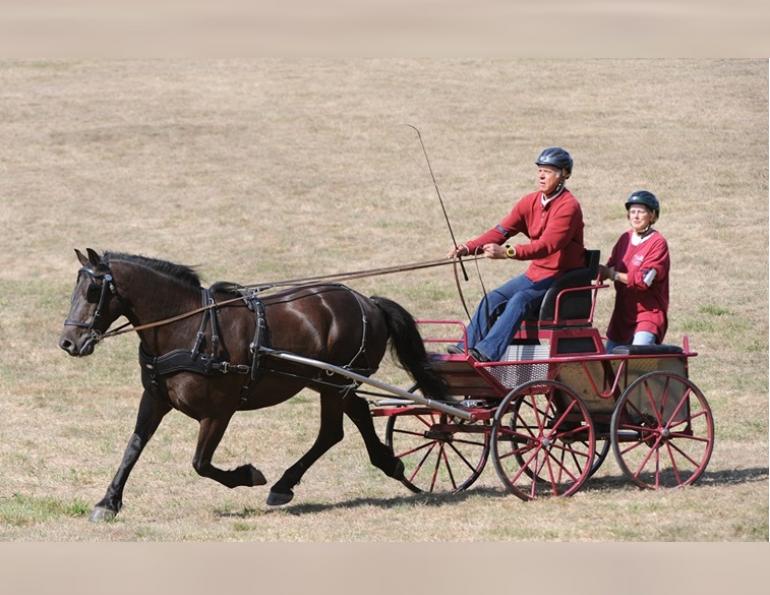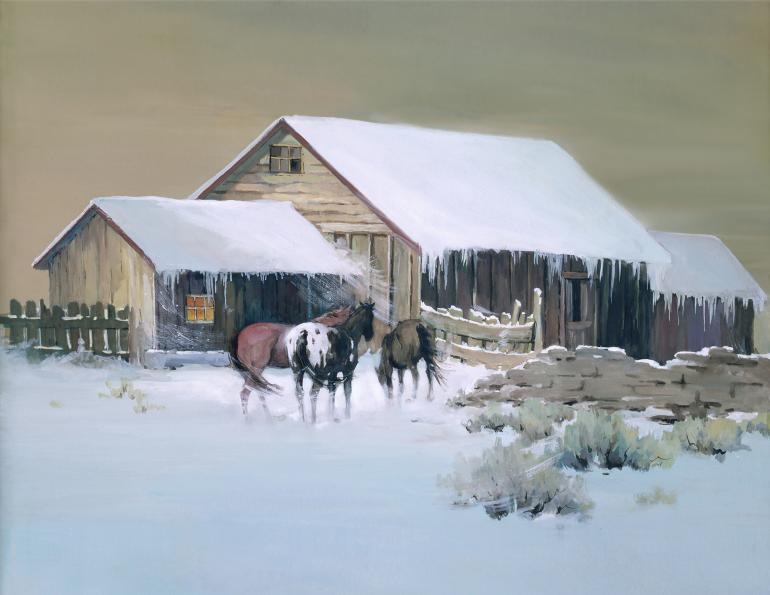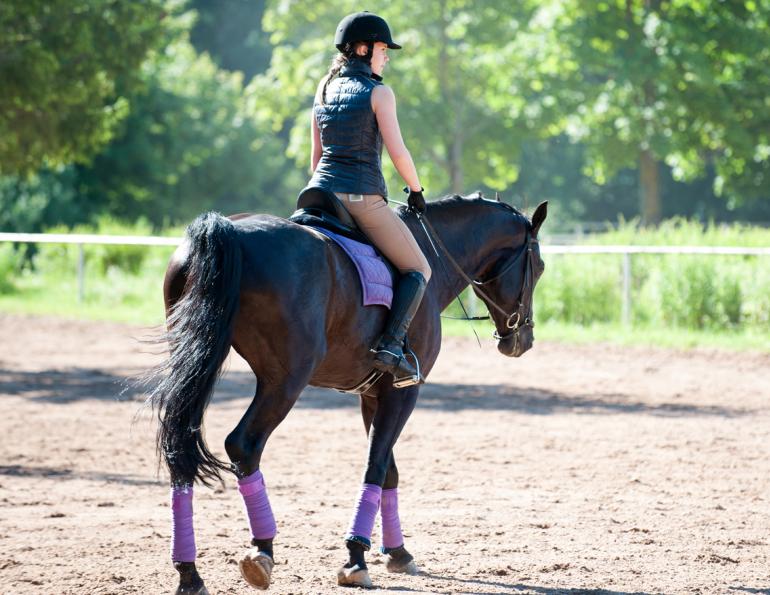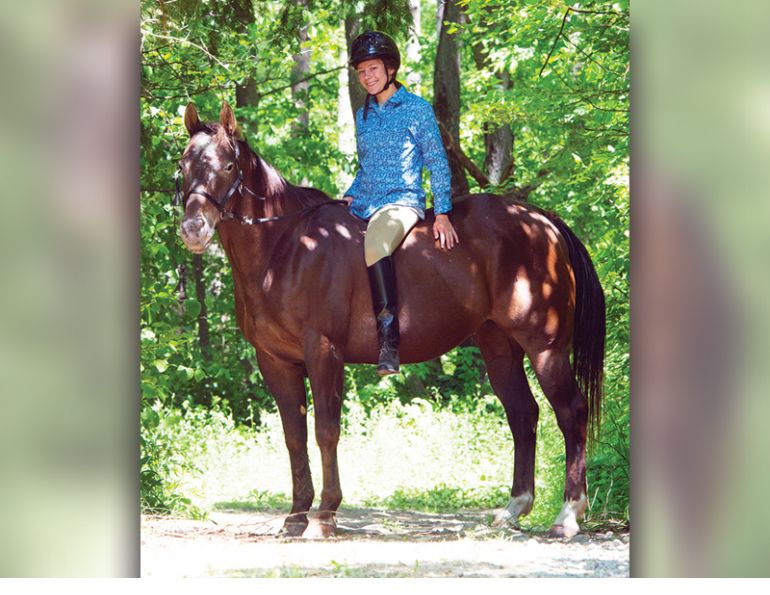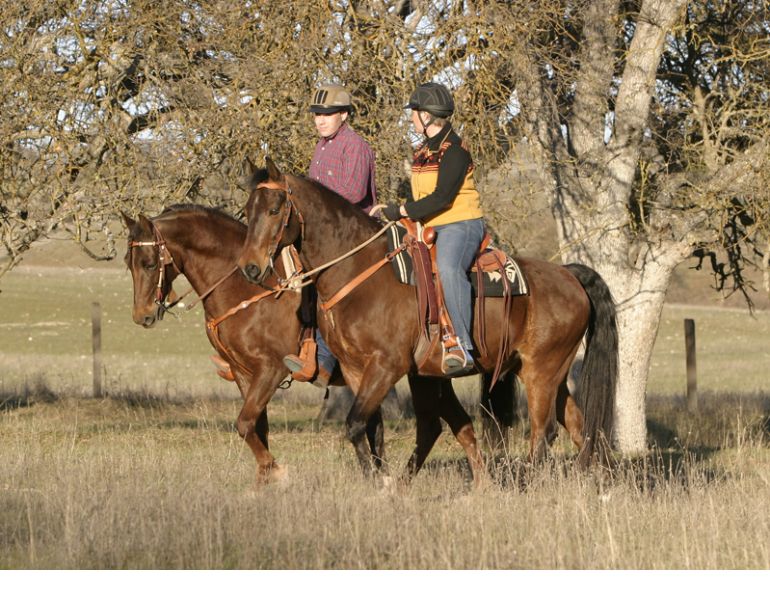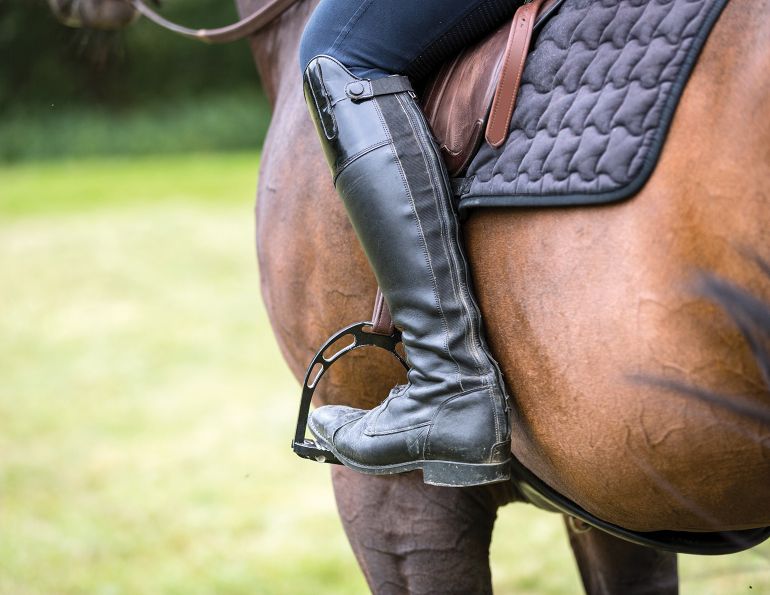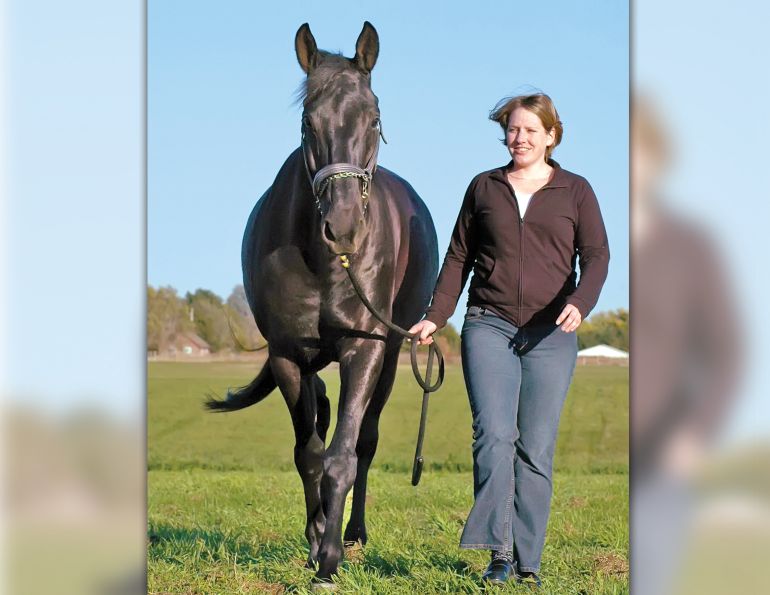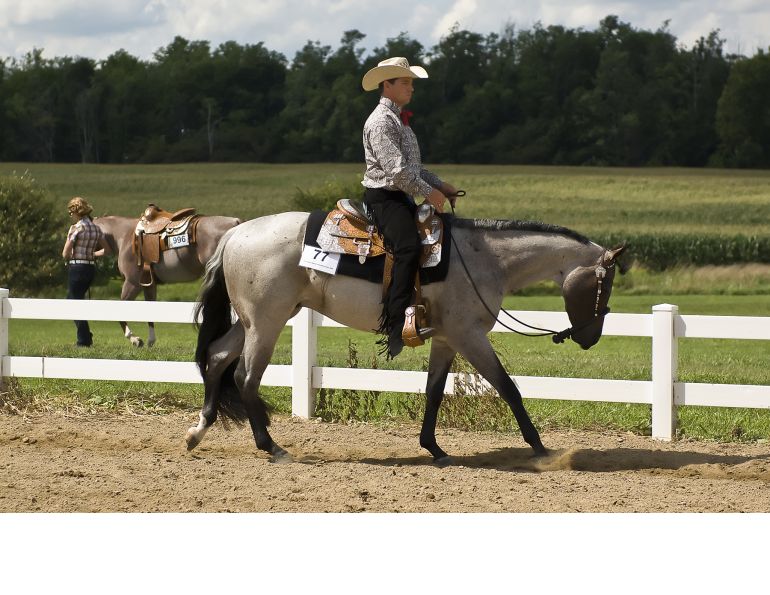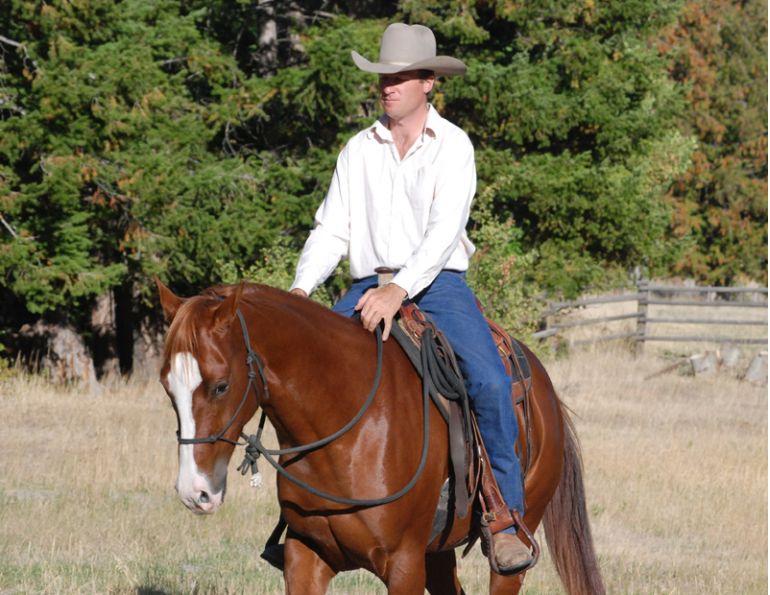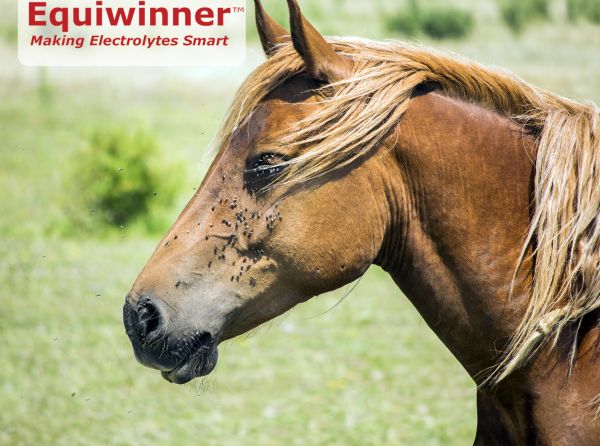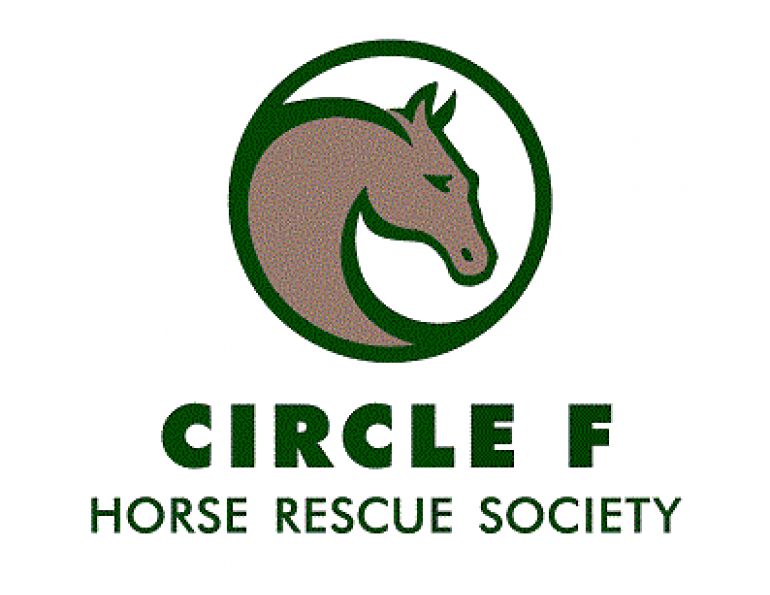By Melanie Huggett
Whether your horse is destined for the rodeo grounds, the jumper ring, or local trails, there is an expectation that he will be able to perform the tasks you ask of him at a certain level.
In the wild or when loose in a large pasture, horses condition themselves while they graze, walking at approximately three to six kilometres per hour over varied footing. However, our recreational and competitive needs put much more pressure on a horse’s body than would be expected of him naturally. This makes proper conditioning vital to ensuring that your horse can safely do his job to the level that is required of him. Just like a person who has spent most of their time watching television will find it impossible to compete in a triathlon, the horse that has done little work will be unable to complete a three day event.
Worse, pushing a horse to do a job before he is physically capable can lead to injuries, unsoundness, or even death.
The Physiology of Conditioning
By producing mild stress on the body with exercise, a horse’s systems — cardiovascular, muscular, skeletal, and others — will adapt, and over time this leads to increased fitness.
“Training is inducing strain. If you exercise the horse but don’t induce strain, then a horse will not improve. Stress on tissues is the only way those tissues will change. But, it’s important not to overstress and cause injury. There is a fine balance between inducing mild strain and pushing too hard and producing damage,” says Fernando Marqués, DVM, Diplomate ACVIM, and Associate Professor at the Western College of Veterinary Medicine, Saskatoon, Saskatchewan.
Related: Feeding Show Horses: A Matter of Balance
Each system in the body works together and in balance to adjust to the stresses on the body during exercise. Some of the fastest and most important changes occur to the cardiovascular system, which involves the heart, blood, and blood vessels (veins, arteries, and capillaries).
During exercise, muscles, the engine of locomotion, require increased supplies of oxygen and nutrients, delivered to them via the cardiovascular system. This causes the heart to beat faster and the horse to breathe harder in order to meet the oxygen and energy demands of the muscles. Working muscles also produce heat, but too much heat causes damage to the body and can even be fatal. Heat is transferred from muscles to the blood, and then the blood is cooled through sweating and increased respiration.
With conditioning, the following changes occur to the cardiovascular system to help the horse adapt to higher levels of exercised induced strain:
- Heart efficiency increases, allowing more blood to be pumped through the body with less effort;
- Blood vessels increase in size and density to allow for greater circulation and oxygenation of blood and greater heat dissipation;
- Number of red blood cells (blood volume) increases to allow for adequate oxygenation of tissues during periods of intense exercise.
The musculoskeletal system, which involves the horse’s bones, muscles, tendons, ligaments, cartilage, and other connective tissues, also adjusts with conditioning. “Bones are not steel. It is active tissue,” says Marqués. “More load on the bones will strengthen them.” For example, the increased pressure on a horse’s legs when jumping will cause the leg bones to increase in strength. Likewise, with exercise the rest of the musculoskeletal system will strengthen as well.
How fast each system adjusts can depend on a number of things, including the individual horse’s characteristics. “Genes can affect how quickly a horse’s systems adjust,” says Marqués. Age also plays a part in how a horse will respond to conditioning, particularly when the horse is older. “Adaptations will take longer in older horses because they begin to lose the ability to accommodate for change,” says Marqués. He advises to take more time when conditioning an older horse. In addition, as an older horse’s body is more prone to strain, Marqués suggests keeping senior horses in a regular exercise plan which includes exercise multiple times per week at a lower level intensity, rather than a single day a week at a high intensity.
These are just a few of the many factors that contribute to the conditioning of a particular horse. Because there are so many components involved, it’s important to develop a unique training program for each horse before beginning training.
“When deciding on a conditioning program for a horse, I look at the age of the horse, what discipline they will be doing, what the animal has done up to this point, how often I will have the opportunity to ride it, whether or not there has been an injury, and the temperament of the horse,” says Deanna Phelan, a coach, trainer, and hunter/jumper competitor from Geary Hill, New Brunswick. She suggests consulting your veterinarian when embarking on a new conditioning program. Involving a vet is particularly important if your horse has had time off due to an injury.
Monitoring Fitness
One of the first things you should do is asses your horse’s current fitness level. You can do this with a body condition test as well as a fitness test. This will give you information on how to best approach beginning a conditioning program, as well as give you an indicator later on of how much your horse’s fitness has improved.
Related: Cross-Training 2.0 with Jec Ballou
The best way to test a horse’s fitness is using heart rate. Heart rate is best measured with an electronic heart rate monitor which attaches to the horse. This allows the rider to know the horse’s heart rate at all times. However, a stethoscope and a watch also work well if you do not have access to an electronic heart rate monitor.

Allow adequate rest and recovery time to avoid overtraining.
A horse’s normal, resting heart rate is 24 to 40 beats per minute (bpm); however, this can vary from horse to horse, so be sure to have a good idea of your horse’s resting heart rate before doing a fitness test.
There are two primary fitness tests involving heart rate:
The Standard Exercise Test is based on the fact that heart rate is directly related to the degree of exercise: as the level of exercise increases, so does the heart rate. For this test, exercise the horse at a specific speed over a specific distance, and measure his heart rate throughout the ride. For example, trot four miles. As a horse’s fitness improves, his heart rate should decrease. This test requires an electronic heart rate monitor.
The Cardiac Recovery Index assesses how quickly a horse’s heart rate returns to normal after exercise, and is often used at checkpoints during endurance and competitive trail riding competitions to ensure the horses are well enough to continue.
You can do this test with a stethoscope or with a heart rate monitor. First, perform a standard exercise, which will be the same each time you test for heart rate recovery. After completing the exercise, record the horse’s heart rate at two, five, ten, and fifteen minutes. A well conditioned horse’s heart rate should return to 60 bpm after ten minutes of recovery, even after a stressful workout. If your horse’s heart rate remains above 72 bpm after ten minutes it likely means that the work effort was beyond his current level of fitness. As a horse increases in fitness, his heart rate will recover more quickly after exercise. Once a horse’s heart rate returns to approximately 44 bpm after 15 minutes, he can tolerate an increase in exercise.
With either test, keep in mind that environmental factors, emotional stimulation, or pain can increase heart rate. Increased excitement or anxiety can cause heart rate to be higher and recovery to be longer than expected. However, if heart rate is abnormally high and the horse is calm, and weather and terrain are the same, then increased heart rate could be an indicator of lameness or disease.
Care should be taken in hot weather as heat stroke is a threat to horses just as it is to humans. “It typically takes a horse two weeks to fully acclimatize to weather changes,” says Marqués. “For this reason, horses who travel should do so three weeks in advance of events.”
Related: The Right Way to Warm Up Your Horse
Going the Distance
It’s important to realize that conditioning a horse takes time. Depending on your horse’s fitness level at the start, it may take four to six months for a horse’s cardiovascular system to reach peak form. Systems such as the musculoskeletal system may take even longer.
Exercise can be split into three types:
- Submaximal exercise keeps heart rates below 150 bpm, and is considered aerobic. That is, the muscles will receive oxygen from the blood, and lactic acid, which is detrimental to performance in high volumes, will not form. Submaximal exercise includes activities such as pleasure riding, endurance, competitive trail riding, dressage, hunters, penning, and Western pleasure.
- Maximal exercise pushes heart rates between 150 and 180 bpm, and is anaerobic. Muscles will not receive oxygen and lactic acid will form. Maxmimal exercise includes disciplines with high intensity, short-burst exertion such as barrel racing, steeplechase, roping, and Quarter Horse racing.
- Combined exercise involves both aerobic and anaerobic exercise, and includes Thoroughbred and Standardbred racing, jumping, polo, cutting, reining, combined driving, and eventing.
Depending on which type of exercise is performed, different adjustments will be made within the horse. “An endurance horse will adjust differently during training than a short racing Thoroughbred. The stimuli are different so the adjustments are different too,” says Marqués.
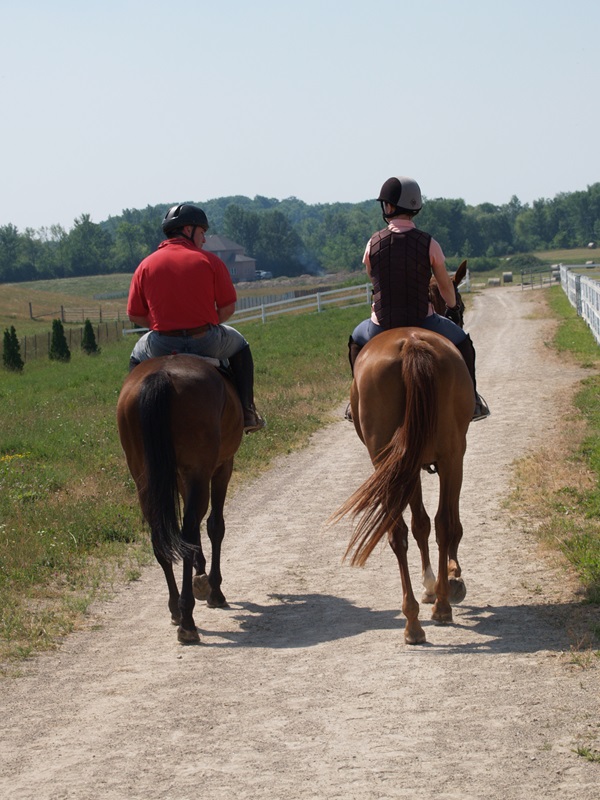
Long Slow Distance Training is the foundation to any conditioning program. Strength training can include exercising in deeper footing, such as sand or snow. Photo: Pam MacKenzie
However, regardless of which discipline your horse is destined for, Long Slow Distance Training (LSDT) is the foundation to any conditioning program. LSDT involves exercise in the submaximal zone and helps adjust the cardiovascular system, which is essential to any athlete. Typically, the beginning of a conditioning program with LSDT would involve exercising the horse at a walk and trot three to four times a week. As the horse’s fitness improves, you can begin doing LSDT five to six times a week, and include slow canter work in addition to walk and trot work. After two to three months, the cardiovascular system will have achieved primary adjustments.
At this point, you can begin incorporating Strength Training (ST) into your program two to three times a week. ST helps strengthen the musculoskeletal system and improves performance and skill. It includes things such as hill climbing, jumping grids, doing more advanced dressage maneuvers, or riding through deeper footing such as sand or snow. Begin ST slowly, building coordination and fitness at lower levels before eventually moving up to strenuous workouts.
Related: Hidden Lameness - Is Your Horse Suffering in Silence?
Interval Training (IT) can also be included twice a week once the horse’s heart rate is recovering quickly after more intense workouts. IT involves interspersing short bursts of maximal exercise between longer submaximal periods, for example, doing fast, steep hill climbs or galloping for two minutes and then walking or trotting for eight minutes. It’s important that the maximal periods do not exceed two minutes. IT further improves the cardiovascular system, develops speed, and helps the horse’s body adjust to tolerate longer periods in the anaerobic state.
When conditioning or training, it’s important to avoid Long Fast Distance Training (LFDT). LFDT can lead to exhaustion and injuries, and does nothing to improve the fitness level of a horse.
Whether you are doing a day of LSDT, ST, or IT, always include a ten minute warm-up of walking and trotting before moving on to work. Muscles work best when they have been warmed up gradually and stress on the musculoskeletal system is reduced. After each ride, but particularly after intense ST and IT workouts or when your horse gets sweaty, a good cool down including walking for 20 minutes is also essential.
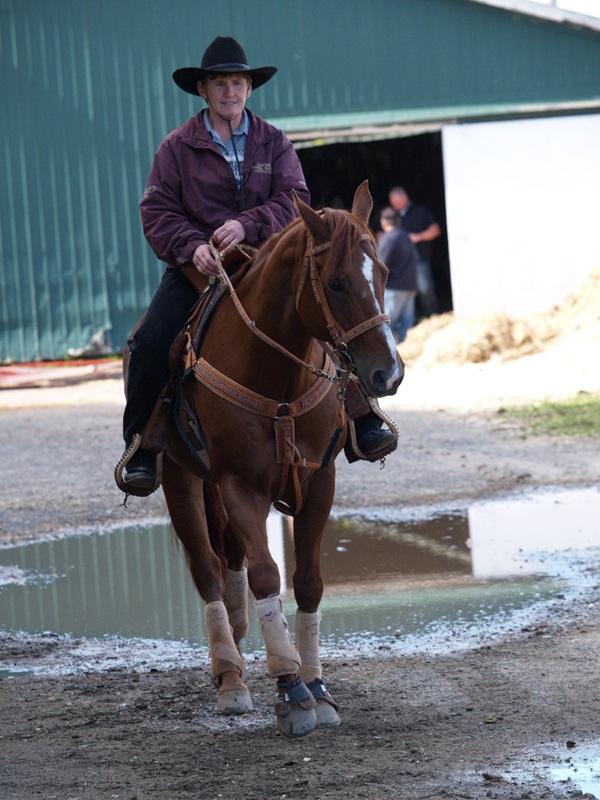
Returning to peak form after time off will likely take less time once a horse has previously reached that level. Photo: Pam MacKenzie
Maintaining Peak Form
Once your horse has reached the level you wish to be at, it is not necessary to continue increasing training intensity. Create a maintenance program; just like a conditioning program, this will change depending on the characteristics of your horse and the discipline and level you are riding at.
At some point your horse will probably get some time off, perhaps due to weather or injury. Depending on the length of time, this may lead to losing fitness, known as “detraining.” After time off, always increase the workload gradually before returning to a regular work schedule. This may only take days to weeks after a short period off, or much longer — up to two months – after three months off. Typically, horses who have already reached peak form return to that same level much more quickly after time off than those who are starting from scratch.
Too Far, Too Fast
It’s extremely important not too push your horse to do an exercise before he is able. “Remember [your horse] might feel like he can do more, but his legs and ligaments are not ready,” says Phelan. That is why it’s important to take things slowly, in small steps rather than large leaps of increased difficulty. “My experience is that exercises stayed the same for seven days before I increased the laps or length of time training,” says Phelan.
Always watch your horse for signs that he is working beyond his capacity, especially when introducing higher levels of exercise.
Signs that your horse is working too hard include:
- Heart rate or respiration not returning to normal after 20 minutes
- Stumbling, less controlled stride
- Lameness
- Muscle tremors, doesn’t want to move
- Heavy sweating, horse hot to the touch
- Panting or blowing
- Elevated heart rate
- Horse refuses to eat or drink.
It’s also important to allow your horse sufficient time to rest, as muscles and other systems need a chance to repair and recover from workouts. Rest periods should be proportional to the amount of work your horse is doing. For example, a day of rest a week is adequate during normal training; but, after a strenuous weekend at a show, your horse may need many days of rest to fully recover.
Riding your horse too often at too high a demand without sufficient resting periods can lead to overtraining. During overtraining, a horse’s energy and enzyme stores are depleted and his body will begin to consume muscle tissue in an attempt to gain energy. “Overtraining is a loss of performance not explained by disease,” says Marqués.
Signs of overtraining include:
- Behaviour changes, irritability, not wanting to exercise
- Lack of improvement or reduced performance
- Weight loss
- Elevated pulse, poor heart rate recovery
- Muscle tremors
- Diarrhea
- Poor appetite
If you see these signs in your horse, contact your veterinarian. If your horse is suffering from overtraining, give him time off from all work. Increased supplements will not help — what is needed is rest.
With the right conditioning plan, continued monitoring, and enough rest, your horse will be ready to take you wherever you want to go!
Related: When Things Go Wrong in the Show Ring
Related: How to Keep Your Horse Fit Without Riding
Main Photo: The conditioning program you choose will depend on many factors including your horse’s individual characteristics and the discipline he is destined for. Credit: Robin Duncan Photography



